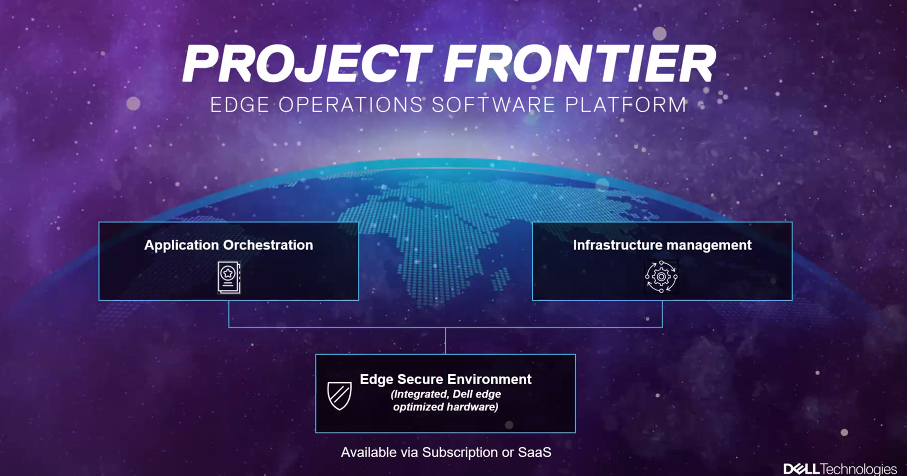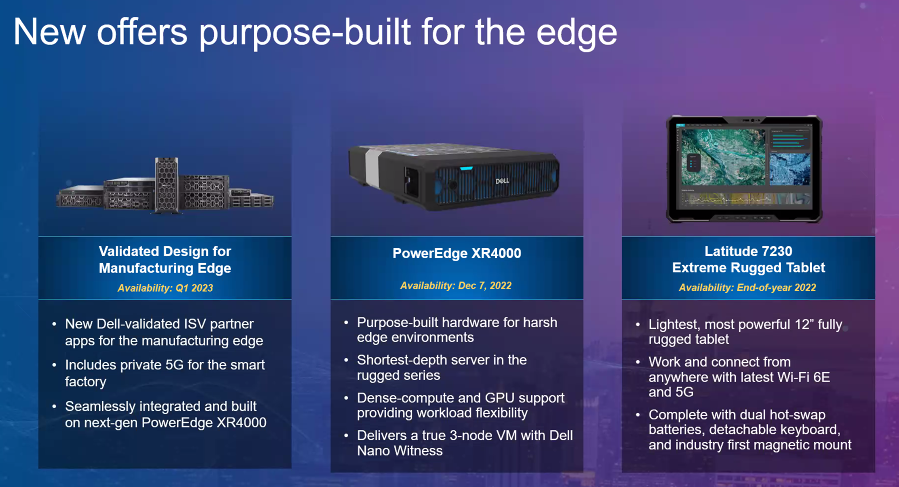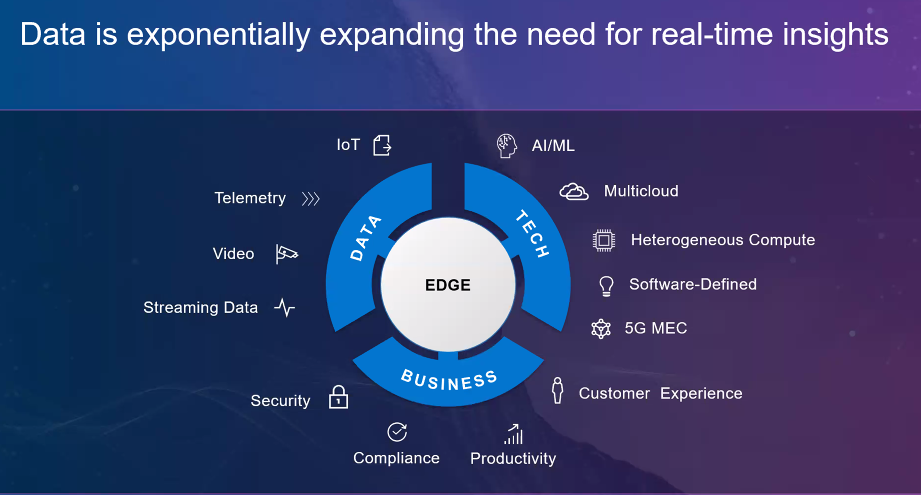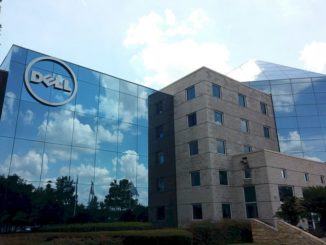
The datacenter is becoming hyperdistributed and incorporating some multiple of capacity – 2X, 3X, 4X, or maybe 10X – outside of the traditional datacenter walls because applications and storage live increasingly at the edge. The edge is not just a new frontier for customers, who are being drawn out of their datacenters by huge amounts of data that has to be handled at low latency if it is to be useful, but also for their IT suppliers who have to follow where the customers lead.
And that means the incumbents of IT are looking to the edge for growth as competition is getting hotter and hotter in the datacenter – ironically, just like all of the machinery in the datacenter is as Moore’s Law comes to an end.
Like the datacenter, this edge needs servers and storage, fast connectivity, software and analytics tools and automation, all the things that OEMs like Dell Technologies, Hewlett Packard Enterprise, and Lenovo have been building for decades. But the edge is a little different, according to Gil Shneorson, senior vice president of edge solutions at Dell. Shneorson used to run the VxRail converged infrastructure business at Dell and worked in various management and engineering roles at EMC prior to its acquisition by Dell in 2017.
“At the end of the day, we need to run applications, mostly in virtualized environments,” Shneorson said in a briefing with journalists. “Dell has been solving for this for many, many years. However, because more of it is done at the edge now than before and because there’s a proliferation of devices and the sheer scale is much larger, you have to rethink how you do the same thing. The message of Project Frontier is rethinking similar concepts of running workloads remotely at a different scale than before, with different connectivity than was possible before. Simplifying things that today are more complex.”
Project Frontier, which Dell is announcing today at the Dell Technologies Summit in Round Rock, Texas, is the name of an initiative to drive a full software stack out to the edge, delivering application orchestration and infrastructure management along with zero-trust security, analytics, automation capabilities, Kubernetes, and virtual machines. Underlying all this is Dell hardware, including a short-depth server and a ruggedized tablet.
Dell also is enhancing its Validated Design for Manufacturing Edge that includes new applications from ISVs and private 5G connectivity, built on the new PowerEdge XR4000 server.
Enterprises can run their choice of applications, Internet of Things frameworks, and multicloud environments.
“The reality is that edge applications run some at the edge, some in the datacenter, some in the cloud, so we’re going to allow our customers, whether it’s a homegrown application, an ISV application, or from one of our ecosystem partners in hyperscale or runtime and others to describe that in the industry standard blueprint and then orchestrate a fairly sophisticated workloads across all of those properties, so their applications can run seamlessly, automatically and lifecycle them together with the edge endpoints,” Shneorson said.
The 2U PowerEdge XR4000, which will be available December 1, is about the size of a shoebox, with a depth that is 60 percent shorter than typical datacenter systems. It’s powered by Intel’s Xeon D chips with the option of GPU accelerators and is designed to withstand harsh conditions and run a broad range of edge applications.
Enterprises are “going to have choices of runtimes and IoT runtimes and IoT stacks and hyperscale runtimes and their own application components to optimize their investment,” he said. “We’re going to give them choice about hardware and configured-to-order to make it all work for them.”
The edge is quickly becoming a focus for many organizations. Dell pointed to IDC numbers published earlier this year that data at edge locations is expected to grow from 895 exabytes this year to 2,763 exabytes by 2026. Given that, it’s understandable why enterprises are pushing more resources out to the edge, grabbing that data and analyzing it to make fast business decisions.
Sam Grocott, senior vice president of product marketing at Dell, noted during the meeting with journalists that 75 percent of enterprises plan to increase their edge spending over the next two years. Dell is pushing to be a significant player in the edge in the coming years. The company has more than 44,000 customers using its edge products – including 81 percent of US Fortune 100 companies – across 40 industries.
“We see the edge as the next frontier of our customers’ business transformation, where data becomes that competitive advantage that is created immediately at the point of creation,” Grocott said. “But we know the game has got to change. We know that it’s going through a large transformation and we need to deliver new solutions to help our customers maximize their edge.”
Dell is competing with the likes of HPE and Lenovo to grab a large chunk of an expanding edge computing market that IDC analysts earlier this year said will hit $176 billion in 2022, a 14.8 percent year-over-year jump. The market will grow an average of 14 percent a year through 2026.
It’s growing because of a flood of emerging technologies like AI, machine learning, and 5G, which will enable much of the growth. There also are massive numbers of data-generating devices – think sensors – that are being deployed in the field, along with 4K high-definition video and streaming data technology.
How the edge fits in the larger enterprise IT picture is still being worked out. It typically has been viewed as the third leg – joining the datacenter and cloud – of the tech stool. However, in an interview with The Next Platform at this year’s Dell Technologies World event in May, John Roese, global chief technology officer for products and operations at Dell, said that may be outdated thinking and that organizations and IT pros might be better served viewing the IT environment in terms of control – primarily of the infrastructure running and managing data and applications – rather than location.
It’s part of an idea Roese calls “edge-first,” with the edge being an extension of the datacenter.
In cloud environments, it is the cloud providers who control the infrastructure, and enterprises need to use more than one provider. Architecture will evolve into two parts – that which the enterprise controls and that which cloud providers control and the enterprise just uses, he said.
“What if we treat edge not as the end of the pipeline but the beginning of the pipeline?” Roese asked. “If all the data originates in my factory, I should land that on a platform under my control, in my private datacenter or in the edge itself. We can use that platform as the control point that would decide whether that data should flow to public cloud A or public cloud B or to handle things like reliability or to insert new technologies or to choose which software-defined edge services should live there.”







